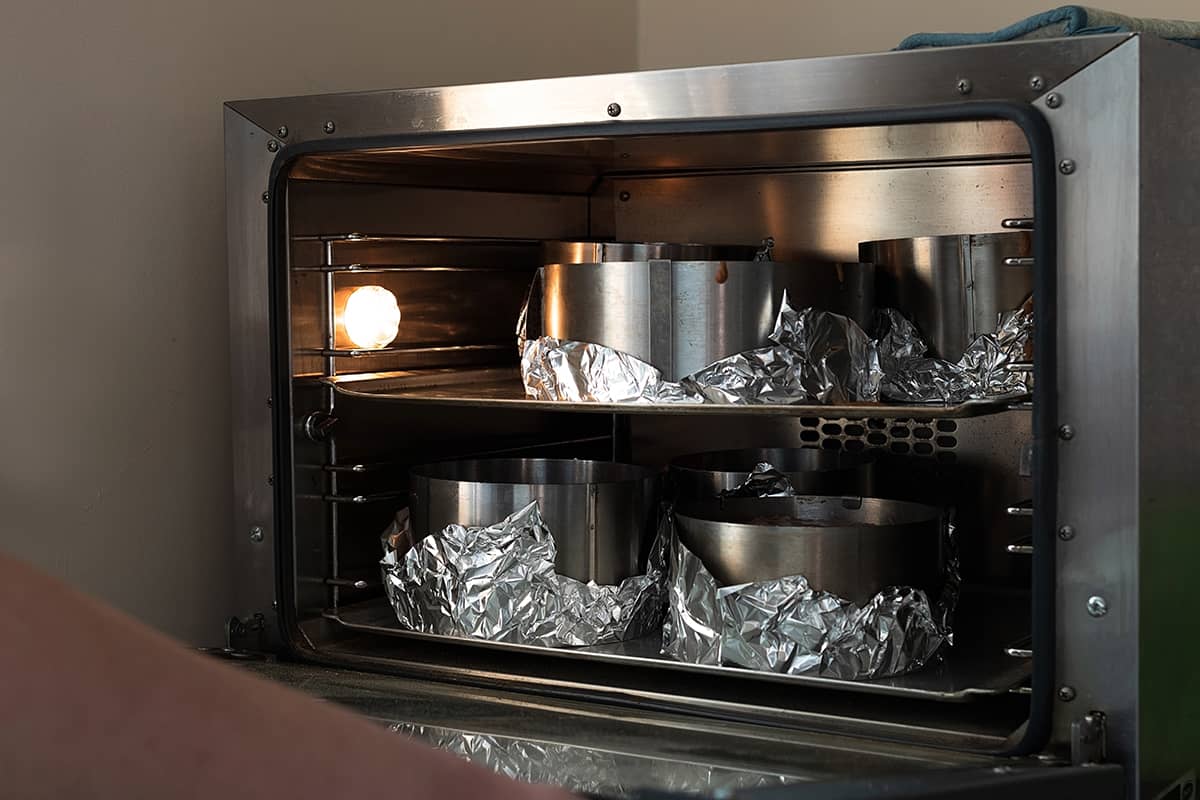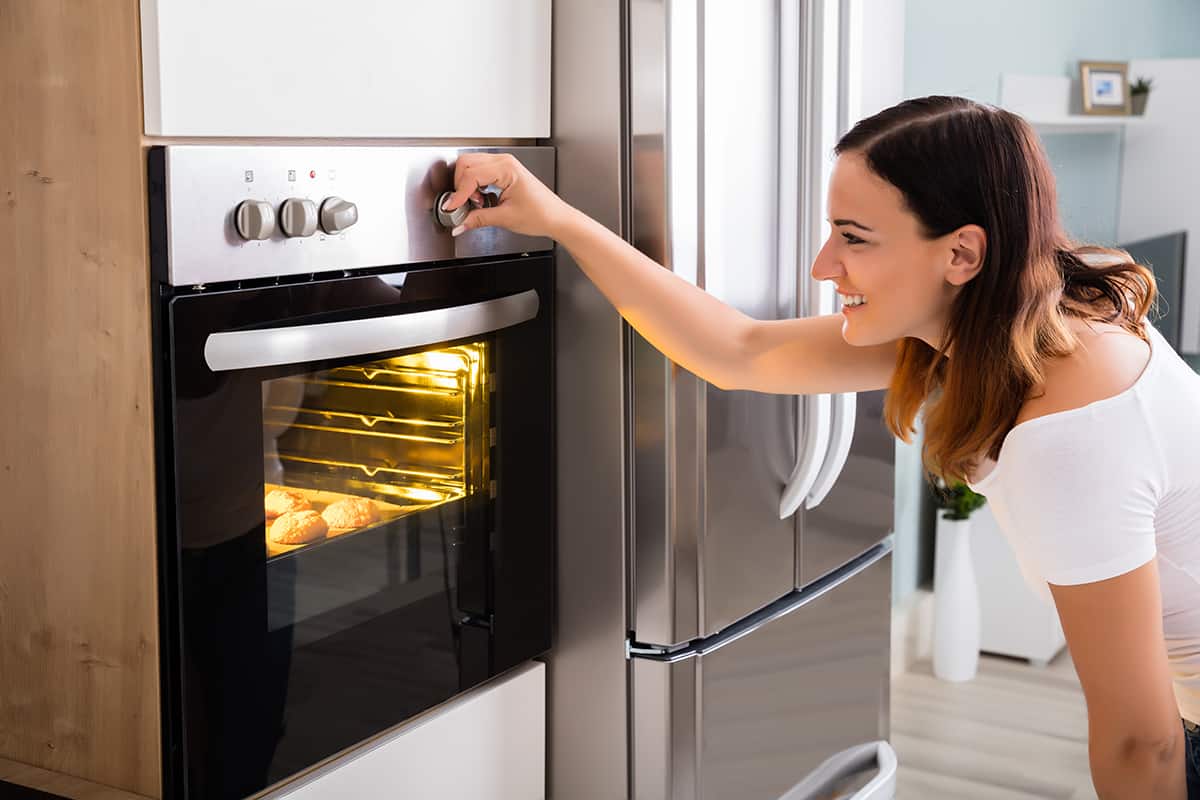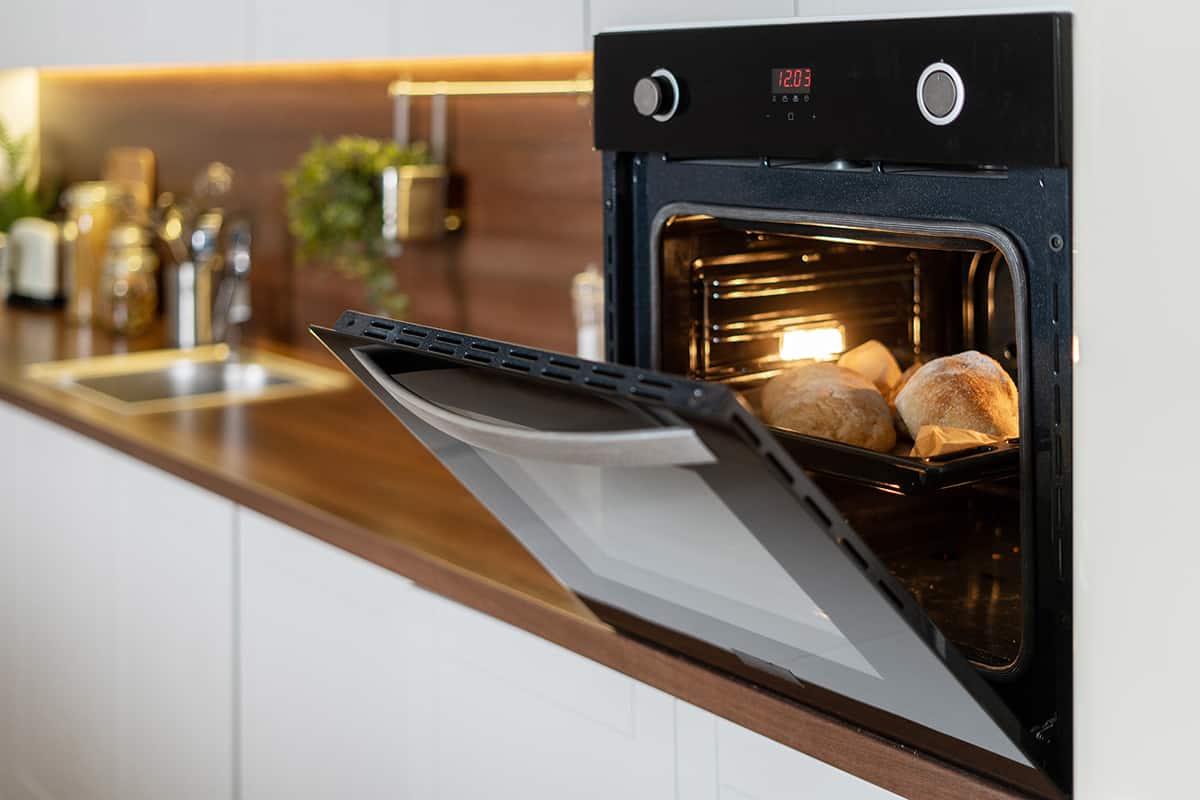Some people look at ovens as an appliance for baking food, while others view ovens as storage compartments for all sorts of unused baking utensils. One thing many people might not have thought about was warming up food in an oven. But is that even possible?
Yes, you keep food warm by placing it inside an oven. Cover your food in an aluminum foil tent and place it in a 150 to 200°F oven. Remember not to leave your food in the oven for too long, or it will begin to overcook or dry out.
In this guide, I’ll talk about how to keep your food warm in an oven, what types of food you shouldn’t reheat in an oven, as well as alternative ways to keep your food out of the “danger zone.”
How to Use an Oven to Keep Food Warm

Keeping food warm in an oven is a pretty straightforward process. As long as your food is in an oven-safe dish, such as a broiler-safe cookie sheet or a non-sticking pizza tray, you can keep it warm in the oven.
Here’s how to do it:
Allow your food to come down to room temperature. It’s never a good idea to shock cold food and bakeware in a hot oven. Not only can it cause thermal shock—i.e., stress on the bakeware material due to extreme temperature changes—but it can lead to uneven heating. When your food is at room temperature, you can proceed to the following steps.
Preheat your oven to between 150 and 200°F. Similar to baking, you want your oven to be at the right temperature before placing your food inside. However, this step isn’t entirely necessary since we’re only heating food and not baking it. However, doing this will give you enough time to finish the following steps.
Tightly cover the top of the food with aluminum foil. Alternatively, you can use the bakeware’s original lid. By covering the top of your food, you ensure that it doesn’t become overexposed to the ambient heat inside the oven’s environment. This will reduce the rate at which it loses moisture. However, if you want your food to heat up more quickly, you can disregard this step, but you shouldn’t leave the food in the oven for too long.
Place the food in the middle of your oven’s center rack. Positioning it in this spot ensures that the bakeware is exposed to even levels of heat from all directions. If you have a convection oven, you don’t have to be as precise when positioning the oven since the impeller fan will distribute heat evenly.
Remove the food from the oven after 10 to 20 minutes of warming. No matter how much aluminum foil you use, your food will begin to lose moisture in the oven over time. At most, leave the food inside a hot oven for 20 minutes. Remember—the goal is to heat the food, not cook it!
Additional Tips
Use a food thermometer. The ideal temperature for warmed food is 140°F. If your food reaches 160°F and higher, you may end up overcooking it.
Use an exterior oven thermometer. The built-in thermometers in ovens aren’t always reliable, especially if your oven is over a decade old. So, to make certain that your oven doesn’t accidentally overcook your food, use a separate thermometer to measure the internal temperature of your oven.
You can reheat the food later. If your food has reached an internal temperature of 140°F, remove it from the oven and let it sit on your kitchen counter. You can reheat it later if you’re still not ready to serve. However, the more you reheat food, the more moisture it loses and the tougher it becomes.
Place ice cubes in the oven to re-crisp breads. Inside a super-heated environment like an oven, ice cubes will immediately begin to melt, covering the inside of the oven with steam. You can try this trick to rejuvenate the crispiness of old bread.
How Long Should You Leave Food in an Oven to Warm?
In the steps above, I explained how you should remove your food from the oven after 10 to 20 minutes of warming. However, this is only a very general rule, and you should actually go by a thermometer for the best results.
The reason is that different foods take different times to heat up thoroughly. For instance, a whole turkey will take much longer than half a chicken or a couple of loaves of bread.
You are always welcome to place warmed food back in the oven when you’re not ready to serve. Just make sure the food is covered in the bakeware’s original lid or an aluminum foil tent.
What Types of Food Can You Keep Reheat in an Oven?

It’s completely safe to warm up freshly cooked food in the oven. After all, it can be difficult trying to focus on 100 things when trying to throw a massive dinner party. However, the following foods should never be reheated after they have come down to room temperature.
Mushrooms
While a bowl of mushrooms might seem like a good idea to serve warm, you probably should do it if you don’t like stomach aches. The proteins in mushrooms can deteriorate in heat and become susceptible to bacteria. The good news is that you can kill bacteria by heating it up to 160°F, but that’s basically recooking them.
Eggs
Reheating eggs doesn’t just lead them to become tougher and less appetizing, but the nitrogen content can become oxidized. It might seem harmless, but what you’re actually doing is increasing the risk of certain cancers.
Rice
There’s a type of bacteria in rice known as bacillus cereus, which grows in room-temp rice. The longer you leave it out at room temperature, the more the bacteria grow and the more upset your stomach can become. However, you can reheat cold rice immediately in a pan, a wok, or even the oven. Just don’t leave it at room temp for too long!
Seafood
Fish is always best served fresh. It’s a delicate type of protein that toughens and easily burns in heat. The best method of reheating seafood is by placing it in a microwave while it’s still stone-cold from your fridge.
Oily foods
Oil becomes rancid with when heated beyond its smoke point. Even microwaving leftover fried foods can lead to an upset stomach. So, if you have old oily food in the fridge and can’t stand eating it cold, toss it away instead.
Why Should You Use an Oven to Keep Food Warm?
There are 3 reasons why an oven is a perfect tool for keeping food warm.
The first is that an oven provides a ton of extra storage space. You can keep your kitchen semi-free from clutter by stuffing platters inside the oven. This will give you enough working space to finish preparing a meal for all your dinner guests.
Secondly, you have complete control over how hot an oven gets. If you’re attentive enough, you can prepare large cuts of meat in the oven and let them sit there until you’re ready to serve. Nobody likes digging into a cold steak or turkey (except for turkey sandwiches), regardless of how piping hot the gravy is.
Third and finally, an oven ensures that your freshly cooked food never enters the “danger zone.”
What Is the Danger Zone?
The “danger zone” is the temperature at which the bacteria inside food thrive. The temperature range is between 40 and 140ׄ°F. If you leave food out for too long within this temperature range (room temp is about 70°F, which falls within the danger zone), then you might as well toss your food in the garbage.
While it’s considered safe to leave food out at room temp for about 2 hours, you should try your best to cut it to about half that time. That way, any pathogens in your food won’t have enough time to replicate and take over your feast.
And this is where ovens come into play. By storing your food in a 150 to 200°F oven, you can almost ensure that the bacteria won’t take over and spoil your hard work.
Alternative Ways to Keep Food Out of the Danger Zone
Of course, an oven isn’t the only tool you can do to keep your food out of the danger zone. As long as your food’s internal temperature is less than 40°F and higher than 140°F, you shouldn’t have any cases of upset stomachs during your next big feast.
If you don’t have enough space in your oven, try using these alternative methods for keeping food out of the danger zone:
Pre-cook and chill
The best thing you can do to save time is by preparing your food ahead of time. That way, you’re not running around the kitchen trying to keep everything in order. Prepare your food 1 day before your dinner party and store whatever you can in the fridge. Just make sure everything is covered properly and inside airproof containers.
Microwave
Microwaves get more hate than they deserve. For some reason, people believe that microwaves destroy nutrients when the opposite is true. Just keep an eye on your microwave and make sure you don’t overcook anything. Set your microwave to medium power, just to be on the safe side.






